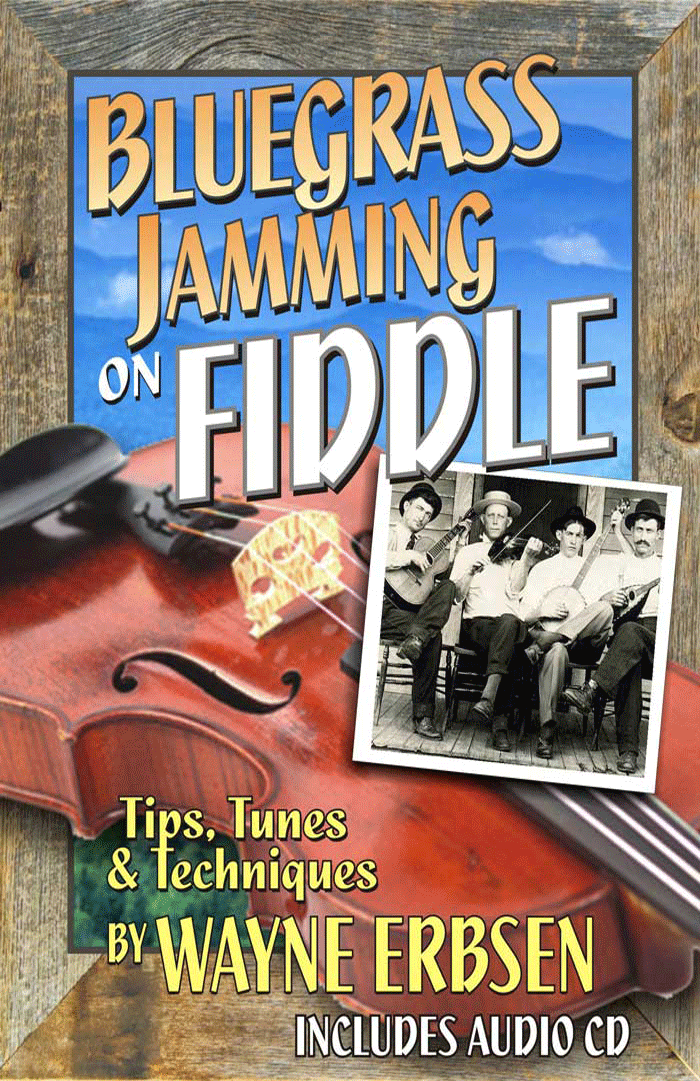
By Wayne Erbsen
Singing harmony is one of life’s truest pleasures, right behind pie and sex. For the moment, I’m not going to give you a complete lesson on singing harmony. You can find that in my book, The Bluegrass Gospel Songbook. Instead, I’m going to give you a partial harmony lesson and show you the simplest harmony part in bluegrass music. Why am I so sure that I’ve found the one song that surpasses all others in its simplicity? For the simple reason that the harmony part I’m about to show you has only one note. Yes, that’s right, one note. If it had any less notes than that, it wouldn’t be harmony at all. It would be silence!
Stick with me here.
Let’s take a look at the song, All the Good Times Are Past and Gone. This mournful song is in 3/4 or waltz time, and has long been considered a standard of traditional bluegrass music. If you’re not familiar with it, zip on over to YouTube, and there you’ll find more than twenty versions.
I usually sing All the Good Times Are Past and Gone in the key of A. In order to sing harmony, you need to understand chords, because harmony is nothing more than singing chords. A chord is composed of the 1, 3 and 5 of a scale. Let’s take an A scale, for example. If we assign numbers to the scale, it would go A (1), B (2), C# (3), D (4), E (5), F# (6), G# (7), and A (8 or 1).
Get out your favorite instrument and strum an A chord. The melody note that goes with the first word of the song (“all”) is a C#. If you count up the A scale, you’ll see that the C# is the 3rd note of the scale. The harmony right above the 3rd is a 5th, or an E.
The simplest harmony part I mentioned is that E note. Only that E note. Yes, while someone is singing the regular melody of All the Good Times Are Past and Gone, in the key of A, you can sing that E note along with the words. You’re gonna have to trust me, but it really does work, this one-note harmony.
Once your get your feet wet singing this one-note harmony, you can expand your horizons, and sing two or three notes. More on that later. Have fun singing All the Good Times Are Past and Gone, a song that glorifies misery and suffering.
All the Good Times Are Past And Gone
All the good times are past and gone
All the good times are o’er,
All the good times are past and gone
Little darling don’t you weep no more.
I wish to the Lord I’d never been born,
Or died when I was young.
I’d never have seen your sparking blue eyes
Or heard your lying tongue. (Chorus)
Come back, come back my own true love
And stay a while with me
For ever I had a friend in this world
You’ve a friend a friend to me. (Chorus)
Don’t you see that distant train
A-coming around the bend?
It’s taking me away from this old town
To never return again. (Chorus)
Oh don’t you see that lonesome dove
Flying from pine to pine?
He’s mourning for his own true love
Just like I mourn for mine. (Chorus)

 Instruction on how to play All The Good Times Are Passed and Gone can be found in two books by Wayne Erbsen: Bluegrass Jamming on Fiddle and Bluegrass Jamming on Mandolin.
Instruction on how to play All The Good Times Are Passed and Gone can be found in two books by Wayne Erbsen: Bluegrass Jamming on Fiddle and Bluegrass Jamming on Mandolin.


Hi Wayne,
I got a banjo a couple of weeks ago and hope to enjoy playing as I near retirement. I’ve been devouring your books and practicing an hour or two each day. I never thought I could really learn to play a banjo because I’ve tried, off and on, to learn guitar, and not had much luck.
But with your lessons, I really have hope! I like your way of giving the “skeleton” and then adding on. Particularly because I like to hear the melody in the songs I’m playing.
Thanks for all of your help. I look forward to meeting you in Asheville some day. Also, the expression above “Have fun singing “All the Good Times Are Past and Gone,” a song that glorifies misery and suffering.”, made me laugh out loud. So glad I found your books and web-site.
John R.
Hey John, Great to hear from you. I’m glad you found my intro to “All the Good times” funny. I wrote that so long ago that I forgot I said that.
Keep in touch, Wayne